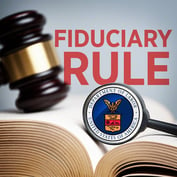A brave new era of insurance regulation will likely be launched sometime this month, when the government’s share of American International Group (AIG) is expected to fall below 50 percent and the Federal Reserve Board uses that opportunity to launch fresh oversight of the AIG holding company.
If so, it would be a significant event. Insurance has been regulated primarily at the state level since the founding of the Republic.
Before the Dodd-Frank Wall Street Reform and Consumer Protection Act of 2010, the two most significant pieces of legislation dealing with insurance regulation emphatically supported state oversight of insurers.
The first was the McCarran-Ferguson Act of 1945, which effectively stated that insurance would be state regulated unless federal regulation spoke specifically to a certain issue.
The second was the Gramm-Leach-Bliley Act of 1999 (also known as the Financial Services Modernization Act), which reiterated McCarran-Ferguson in several ways. One of them was to specifically bar federal regulation of insurance holding companies, as well as restating state oversight of insurance operating subsidiaries.
Dodd-Frank changed that somewhat. Although the act leaves the states as regulators of insurance operating companies, it also created the Federal Insurance Office (FIO) as the means by which the Treasury Department could monitor major domestic and international insurance policy issues. And while the FIO has the authority to monitor most aspects of the insurance industry, it has not exercised it yet. Rather, it will first release a long-awaited report to Congress with suggestions for how insurance should be regulated, which will signal to the industry how aggressively the FIO intends to shake up insurance oversight, if at all.
In the meantime, the FIO also has the authority to recommend to the Financial Stability Oversight Council -another agency of the Treasury Department – which insurers should be considered systemically important financial instituions, or SIFI for short. SIFI companies would merit additional oversight to operations that could potentially crash more than themselves if they went insolvent, as was nearly the case with AIG when it nearly collapsed in 2008 due to its excessive exposure to collateralized default swaps.
On a third front, Dodd-Frank also designated the Fed as the regulator of all financial companies which own savings and loan associations, which has spurred many insurers who own thrifts to shed them so they might avoid another layer of regulation.
According to industry lawyers and analysts as well as regulatory filings by AIG, federal oversight of the company once it leaves government ownership could be triggered in two possible ways. One is by AIG remaining a thrift holding company, because the Federal Reserve will become AIG’s regulator when the shares of AIG that the Treasury owns drops below 50 percent.
And additionally, that would also occur if the FSOC designates AIG as a SIFI.
In a proposed rule published for comment in June, insurers which operate thrifts would be subject to the same capital standards as banks at the holding company level except for certain unique insurance activities. Under the proposal, special capital treatment for insurers would be only applied to specific activities, such as separate accounts, deferred acquisition costs and insurance underwriting.
Most observers believe that to be consistent, the FSOC will oversee institutions it designates SIFI in the same manner as it regulates thrift holding companies. As a result, whichever way the Fed decides to oversee AIG, it would be subject to rules currently in place only for banks.
Stock markets, industry lobbyists and, privately, even state regulators, are anticipating that scenario.
John Nadel, an analyst at Sterne Agee in New York, said that AIG management continues to indicate that they are preparing for, and expecting to be regulated by the Fed – whether specifically as a non-bank SIFI or otherwise. “But they do point out that it is a working assumption, and they do not yet know for sure whether they will actually be Fed regulated.”
Sue Stead, head of the insurance regulatory practice at Nelson Levine de Luca & Hamilton, based in Columbus, Ohio, said state insurance regulators are aware of the Fed proposals. She also acknowledges that it is “it is unclear how federal and state regulators will coordinate their respective responsibilities.”
“A lot of this remains to be seen,” she said. “State regulators have had discussions with federal regulators as to how this will work out.”
They also are working to make sure federal regulators, in proposing new rules, fully take into account that insurers are already highly regulated, with strict standards, on capital, how they invest, and what they invest in, Stead said.








 August 14, 2012 at 06:59 AM
August 14, 2012 at 06:59 AM









